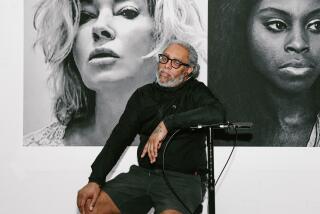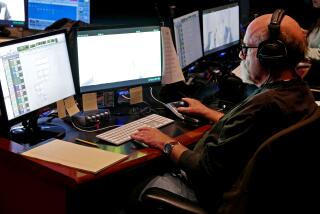ScottWorks will celebrate the fantastical ideas of Raymond Scott — big band composer, electronics inventor and cartoon-music guy
The Electronic Baby Rattle. The Musical Sculpting Instrument. The Electronic Celeste. The Heavenly Harpist. Bandito the Bongo Artist. Ashtray with Tinkling Sounds.
If the future had followed the path Raymond Scott imagined in the mid-’60s, the late composer, inventor and cartoon-music guy would be listed among America’s visionary musical inventors. Yet his odd creations doubled as melody-generating instruments that brought electronic music into everyday life, and Scott’s work foreshadowed today’s reliance on studio-driven productions. It’s no surprise, then, that he’s been regularly sampled by those in the hip-hop community.
Scott, prone to grand claims, told the San Francisco Chronicle in 1947 that he “split the musical atom. Go ahead, call me crazy, a dreamer, nuts. But I have made a great contribution to musical America.” Scott devotees will celebrate his fantastical vision with the first ScottWorks: The Raymond Scott Festival, a daylong symposium Saturday at the Colony Theatre in Burbank. Among the speakers and presenters are Grammy-winning producer Hal Willner, who oversaw the production of the Scott compilation “Reckless Nights and Turkish Twilights,” and Herb Deutsch, co-inventor with Robert Moog of the pioneering Moog synthesizer.
Though a brilliant thinker, Scott wasn’t much of a doer. “He was so secretive — and that also translates as paranoid that people would steal his great ideas — that he didn’t publicize,” says Brian Kehew, electronic music historian, co-founder of the Moog Cookbook and co-author of “Recording the Beatles,” which explores the band’s studio work.
“Generally, nothing was finished — just raw ideas being churned out,” Kehew adds. “Some of them are sensible and some of them are totally crazy.”
Kehew describes attempts to understand Scott’s voluminous work as “looking through a peephole at his life, and different people have different views. Some people are experts at the acoustic band music, some people are studying the electronics, and his personality, his life, his family.”
Before relocating to Los Angeles in the early ’70s to take a job at Motown Records, Scott spent his life on the East Coast, starting in 1930s New York as a big band leader writing tightly composed, frantic ditties for mid-sized jazz outfits. Many of those works, including “Powerhouse,” “War Dance for Wooden Indians,” “Twilight in Turkey” and “The Toy Trumpet,” were used to score classic “Bugs Bunny” and “Road Runner” cartoons for Warner Bros.
Scott’s desire for perfection — and lack of enthusiasm for the imprecision of human players — led him to try to eliminate musicians from his process altogether.
He founded his own electronics company, Manhattan Research Inc., in the late ’40s with the goal of harnessing synthetic tones in service of radio commercials — adding space-age bleeps and blurps across the ’50s to spots for cough-syrup makers and lighting companies.
Scott’s pitch for the company shot for the moon: “Manhattan Research, Inc. ... More than a THINK factory — a DREAM center where the excitement of tomorrow is made available today.”
Images of Scott posing in his research facility show him in a room filled with electronics, dotted with knobs, switches and inputs. Scott spent much of the next three decades refining instruments including the Clavivox and the Electronium, which he claimed was the first self-composing musical instrument.
Tones from those experiments, compiled on a set of collections called “Manhattan Research, Inc.” have been sampled on songs by essential hip-hop producers including J Dilla, Flying Lotus, El-P, Madlib, Pete Rock and Danny Brown.
In one Electronium proposal from the late 1960s stored among his papers at the University of Missouri-Kansas City, Scott describes the instrument’s “method of operation” as “... faster, slower, a new rhythm design, a hold, a pause, a second theme, variation, an extension, elongation, diminution, counterpoint … Whatever the composer requests, the Electronium accepts and acts out his directions.”
In papers of the time he wrote of a future with personalized ringtones, doorbells with programmable melodies and so-called “Fascination” machines that, when plugged into a living room outlet, played improvised ambient music. Scott pitched vending machine companies on a Pavlovian idea involving melody and nicotine: “The customer deposits change for a pack of cigarettes — above the customary clatter of the machine, a cute bit of electronic music takes place — intriguing to the customer — serves as an advertising sound for the cigarette manufacturer.”
He seldom sold these concepts. “He didn’t promote. He didn’t even finish his projects when he was on to the next one,” Kehew says. “So no one really knew what he was up to, including the family and including many of the so-called experts out here.”
Unlike his friend and peer Moog, who would develop a successful business model for his synthesizer, Scott was “really on the periphery, but always there,” Kehew says. “He predates a lot of people in his involvement and, certainly, his enthusiasm for electronic music.”
In 1972, Motown founder Berry Gordy, who had relocated his label to Hollywood from Detroit, bought Scott’s Electronium after seeing it in person at Manhattan Research. Scott soon headed west.
“It was such a complicated piece of equipment, part of the agreement was he would come out for six weeks. But six weeks eventually turned into four years,” says Scott’s son, film and TV editor Stan Warnow, who handles his estate and is overseeing ScottWorks. “[Motown] hired him as their director of electronic music and research. They had the machine at the MoWest studios and it was sort of seen as a kind of idea generator.”
The allure, explains Kehew: “He could generate a sound that didn’t have to mirror the past world of pianos and cellos — sounds that no one’s ever heard before, sounds that are completely unique. Maybe they evolve over 30 seconds or have a wide range of pitch not possible on normal instruments.”
It’s not known whether the Electronium’s melodies generated any Motown hits in the ’70s, but the inventor spent the rest of his life in the L.A. area. After Scott died, composer and Devo co-founder Mark Mothersbaugh rescued the Electronium from Scott’s garage. It’s currently being housed in one of Mothersbaugh’s storage facilities.
Although Scott never achieved the success or attention of peers Moog and Don Buchla, the music he created has echoed across the decades.
Not that he ever seemed satisfied. “I hate the present electronic music. It’s too mechanical,” Scott told Electronic TV Week magazine in 1970.
♦ ♦ ♦ ♦ ♦ ♦ ♦ ♦ ♦ ♦
ScottWorks: The Raymond Scott Festival
When: 10 a.m. — 7 p.m. Saturday, with concert for a separate fee to follow at 8
Where: The Colony Theatre, 555 N. Third St., Burbank
Tickets: $30-$85
Info: www.raymondscott.net
For tips, records, snapshots and stories on Los Angeles music culture, follow Randall Roberts on Twitter and Instagram: @liledit. Email: randall.roberts@latimes.com.
More to Read
The biggest entertainment stories
Get our big stories about Hollywood, film, television, music, arts, culture and more right in your inbox as soon as they publish.
You may occasionally receive promotional content from the Los Angeles Times.







